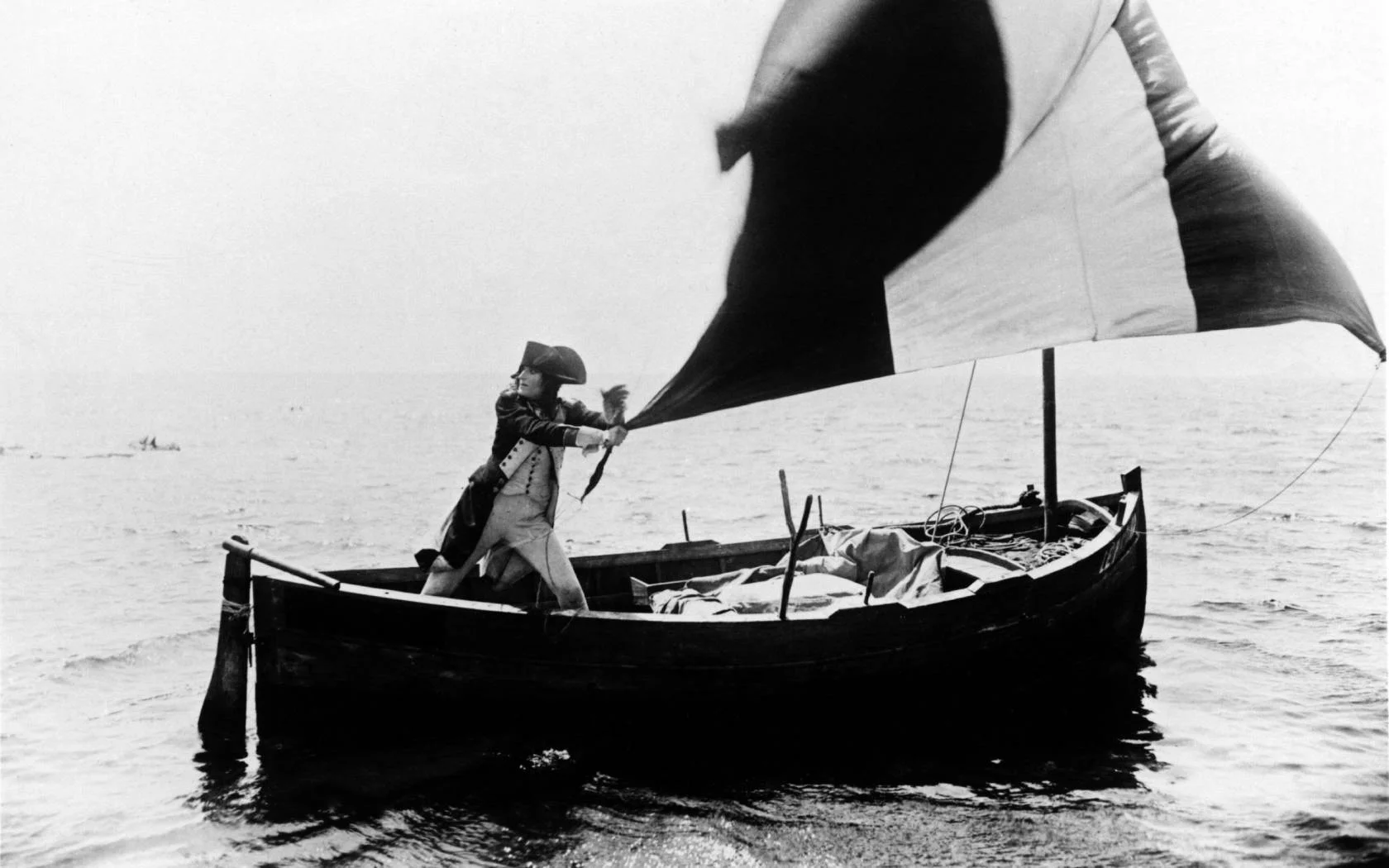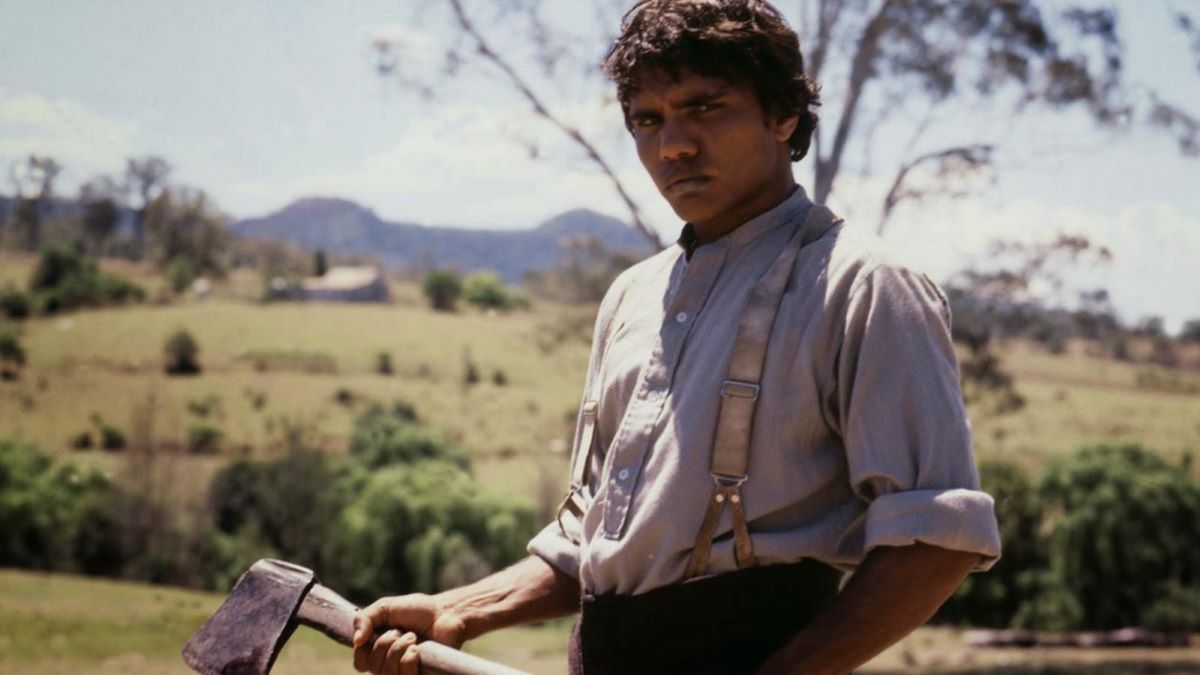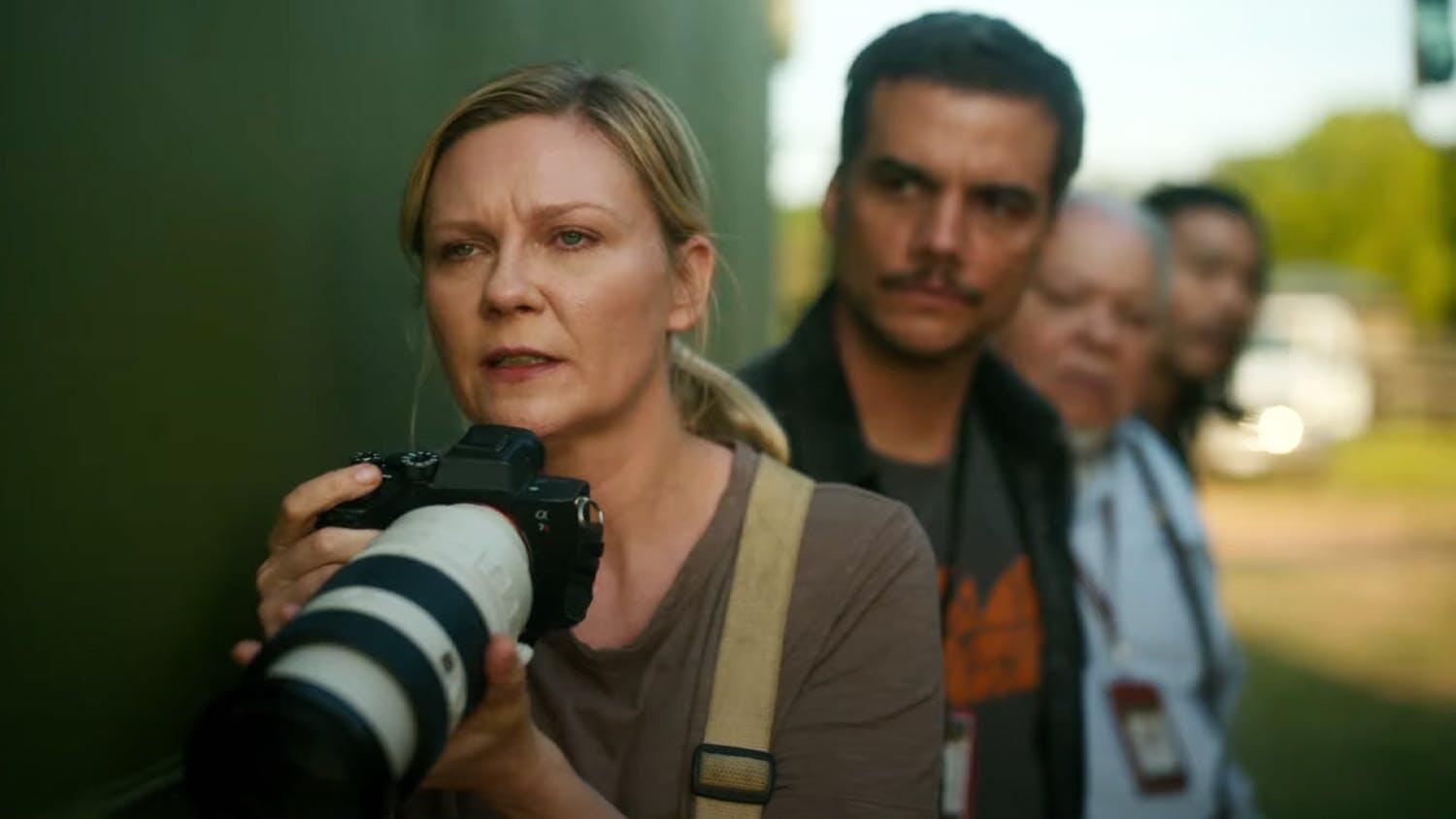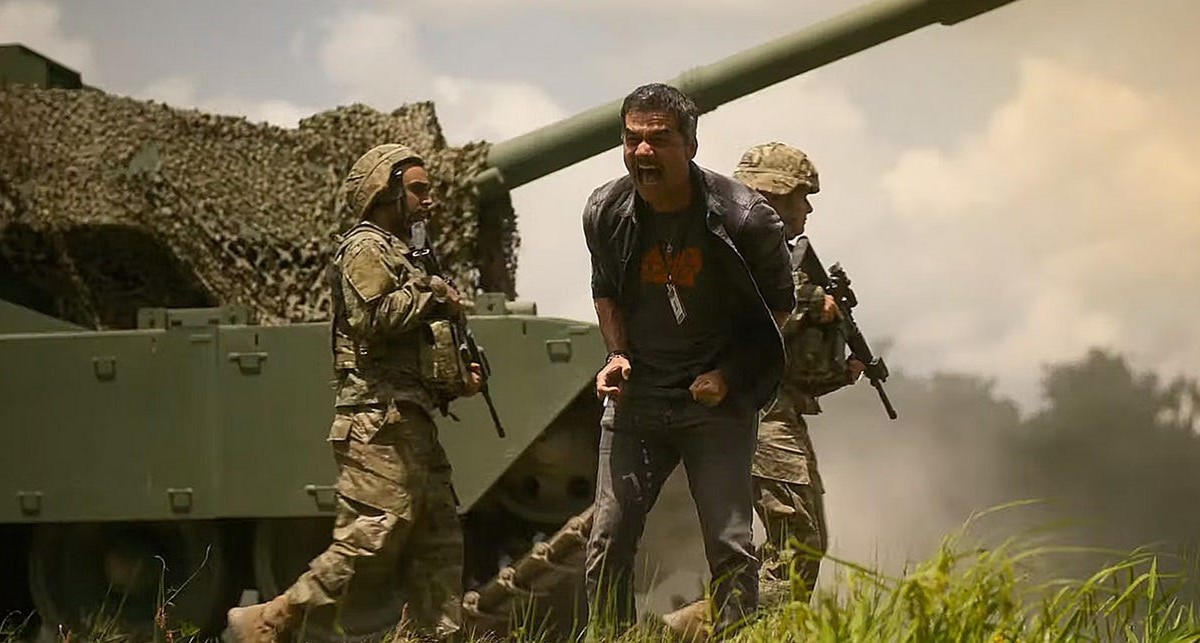by Pauline Kael
I’m disposed to like Prince, the twenty-six-year-old pansexual star of Purple Rain, because he is, as a friend of mine put it, “the fulfillment of everything that people like Jerry Falwell say rock ’n’ roll will do to the youth of America.” I like the teasing sexiness of some of his songs of a couple of years ago (“Little Red Corvette,” especially, and “1999” and “Delirious”—they have a piquancy), and I like the brazenness that he shows at the end of this movie when, in a variation on Jimi Hendrix’s guitar bashing, he puts on his impish smile as he holds up his own guitar and it ejaculates. But Prince the passionflower imp is only intermittently in evidence in Purple Rain, which his managers produced for him, and which in its opening week was the No. 1 attraction at the nation’s theatres—at the same time that his Purple Rain album was at the top of the music charts. This custom-made movie, shot on location in Minneapolis, where he lives, features Prince the vulnerable loner. As a struggling musician known simply as the Kid, he’s trying to break out of the bondage represented by his parents’ violent love-hate marriage. His self-pitying black father beats his white mother, because he blames her for his failure to achieve success as a composer. The moody Kid is a tortured soul, who when he falls in love with Apollonia (played by the Hispanic American actress Patty Apollonia Kotero) begins to repeat the pattern. But, of course, the love that is the source of his torment is also the source of his redemption. The Kid learns to share with others, and conquers the brute in himself (but only after several reels of apocalyptic anguish). It’s not difficult to see the attraction that the picture has for adolescents: Prince’s songs are a cry for the free expression of sexual energy, and his suffering is a supercharged version of what made James Dean the idol of young moviegoers—this Kid is “hurting.” And this picture knows no restraint.
In his live performances, when Prince mimics Little Richard or Mick Jagger, or whomever, he does it with a knowing, parodistic edge. And he retains this knowingness in his screen performance. But the moviemakers aren’t skillful enough to use it; the movie is directed as if the maudlin story it tells were all there is to the Kid. Prince, though, uses his flair for outrageousness, and when you least expect it he will do something petulant or flirty. Alone with the overpoweringly sultry Apollonia, whom he presumably adores, he reacts to her light touch on his collarbone with an ingenue’s high, breathless “Stop!” He’s quite willing to pose as the little-boy wallflower at the rock ’n’ roll orgy, but he doesn’t seem willing to take seriously the plot devices that he had a hand in shaping. The poor, struggling Kid is dressed in the neo-Liberace finery of Prince, the star— the skintight pants, the ruffled shirts with high flounces at the throat, the spangled, embroidered vests, the white lace gloves, and the chains. He’s lighted, by the cinematographer Donald Thorin, like a Josef von Sternberg heroine—a minx with sucked-in cheeks, pouting and making deeply religious doe-eyes at the camera from under a cluster of curls. When the Kid is supposed to be a failure as a performer at the Minneapolis club where he and his group, The Revolution, are an introductory act and are in danger of being fired for not giving the customers music they can respond to, Prince is not about to put on a closed-in, selfish performance just because the script calls for it. He whips those customers to a frenzy; he struts and preens himself with the same sexual bravado that he shows after the Kid has made his breakthrough.
This is a commissioned film: it was directed by Albert Magnoli (who also wrote the final script and was the co-editor), but Prince is in charge, and he knows how he wants to appear—like Dionysus crossed with a convent girl on her first bender. And his instinct is right: if he had performed the role more realistically, the picture would be really sodden. This way, his narcissistic, mock-shy pranks make the audience laugh, and his musical numbers keep lifting the movie’s energy level. (The plot becomes a kind of shared joke between Prince and the audience.) Even the songs that are undistinguished have a good hot beat and a jangly plaintiveness and the punctuation of his falsetto shrieks and flourishes, and the lament “When Doves Cry” has something more (although it’s presented as soundtrack music while the Kid thinks over his treatment of Apollonia and his hellish home life, and we have nothing to do but listen to the words, which are not its strong point). Prince’s movements during his numbers are as provocative as he can make them, and near the end he finally gets around to some orgiastic—but perfectly precise —dancing. Maybe he doles it out so sparingly because he only has a few moves—but they’re good ones. He’s much more fluid than Mick Jagger (whom he often suggests); he’s very fast without being at all spastic. He’s a cutie when he dances.
Prince saves himself by his impudence, and the picture also introduces a full-fledged young comedian, Morris Day. The lead singer of the group The Time, he is cast as Morris the villain—the more conventional funk rocker, whom the Minneapolis audience responds to. Morris’s music represents clowning and escapism; the Kid’s music is meant to be a working through of his conflicts. (And that’s part of what’s the matter with Prince’s lyrics; they’re prosy, they explain what the Kid is suffering, they damn near have a program. “Maybe I’m just like my father, too bold/Maybe you’re just like my mother, she’s never satisfied/Why do we scream at each other/This is what it sounds like when doves cry.”) Decked out in a glittering gold zoot suit and black-and-gold shoes, Morris Day does his vain, lecherous routines with the ease of the top vaudeville artists of decades past; he feasts his eyes on the mirror, giggling with joy at how he looks, all lighted up like a Christmas tree, or he hurls his magnificence into a waiting car—almost everything he does gets laughs. And when he and his handsome sidekick, Jerome Benton (who looks like a dark Douglas Fairbanks, Sr.), dance to The Time’s music they have a loose, floppy grace. Morris Day suggests a Richard Pryor without the genius and the complications. Part of the pleasure of watching him is that his musical numbers are shaped; so is his performance—he uses distance and tension. This is certainly a contrast to Prince, who doesn’t want us to react to a performance—he wants us to react to him, to his greatness. It’s clear (and infinitely regrettable) that he sees himself as a sexual messiah, and wants to overwhelm us. He’s trying to shortcut his way to artistic heights by a show of naked self-expression. (You see a lot of this in the work of the rock stars, such as Bruce Springsteen, that the rock press takes the most seriously.) Prince is trying so hard to show us sex as salvation that his musical numbers have no shape. (Even on the Purple Rain album, the songs don’t take form or come to a satisfying finish; they maunder on.) The picture, being designed to show that the Kid’s way is the right way and that The Time’s way is a sellout, doesn’t do much with the other characters. But as the Kid’s frustrated-artist father, Clarence Williams III, who has a horrendous, completely unrelieved role, brings it off with conviction and earns the audience’s respect. The women aren’t so lucky. Most of them seem to be selected for how they’ll look in hooker lingerie or hooker leather. (Couldn’t Apollonia just once have put on civvies?)
As a movie, Purple Rain is a mawkish fictionalized bio—it’s as if Lillian Roth (rather than Susan Hayward) had starred in I’ll Cry Tomorrow, or Barbara Graham (rather than Hayward) had starred in I Want to Live! It’s pretty terrible; the narrative hook is: will the damaged boy learn to love? There are no real scenes—just flashy, fractured rock-video moments. The Kid and Apollonia meet via the camera: it zings back and forth recording closeups as they look at each other, and that’s all there is—it’s like the way a cat and a dog meet in an animated cartoon. And this movie goes beyond jump cuts to plot leaps. (Morris talks to his crony Jerome about his designs on Apollonia before he has so much as seen her or heard of her.) The director isn’t a man of subterfuges: when he wants you to share in the characters’ steaming emotions he throws hot red mood lighting on them; when Prince, doing his act at the club, writhes on the stage floor in an ecstasy of longing and sings “I want you,” the director cuts to Apollonia watching teary-eyed with empathy for his pain. Rock critics are being quoted in the picture’s praise; one suggests that it’s the Citizen Kane of rock movies, another ranks it with A Hard Day’s Night. They’ve probably waited so long for a rock-movie classic that they were keyed up to see something inspiring and innovative in Prince’s mere presence on the big screen. For several years, rock writers have been saying things like “Prince challenges listeners to examine their lives” and citing lyrics such as “Stand up everybody, this is your life/Let me take you to another world/Let me take you tonight /You don’t need no money, you don’t need no clothes/The second coming, anything goes/Sexuality is all you’ll ever need/Sexuality, let your body be free.” Prince may consider himself a revolutionary force because he (like his band) represents a fusion of the races and the sexes and because his music is his own, self-taught eclectic mix. But there’s nothing revolutionary in Prince’s wanting to be Susan Hayward and commissioning a film to enhance his star mystique. Purple Rain is a landmark of sorts, though. It’s the black crossover movie that many of us expected a decade ago, when Diana Ross appeared in Lady Sings the Blues and showed the kind of talent that made her seem a natural to attract both black and white audiences. (Although Pryor has done it, that has been strictly in comedy.) But, as it turned out, Diana Ross wanted to be like the goddessy, self-glorifying white stars that moviegoers were fed up with; she appeared in Mahogany and The Wiz and lost the white audience. Purple Rain is Prince’s bid for goddessy big-time stardom. In quality, it’s about on a level with Mahogany. But a new generation has come along that isn’t jaded about old movie-star self-absorbed emoting, and when Prince turns his life into a soap the audience loves it. The Kid’s sequinned psychobabble goes over big. He learns to reach out and touch somebody’s hand, and that frees him to be a star. And, yes, he does it his way.
A movie like this can make you wonder: Weren’t all the people who learned to love better off before?
The New Yorker, August 20, 1984




